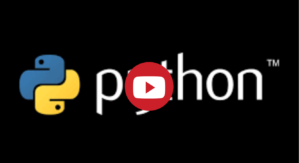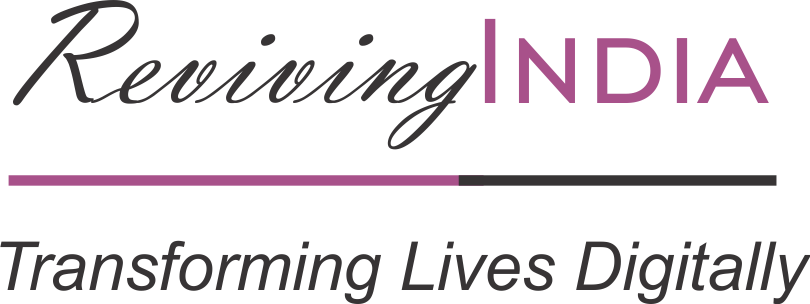What you will Learn
This program covers web development fundamentals, Python programming for AI and ML, database management using Python, Django framework for web applications, and AWS cloud services for deployment and scalability.

Course content

- What is Python? A Brief history of Python
- Why Should I learn Python? Installing Python
- How to execute Python programs.
Practice Question
- What is Python?
- Who created Python?
- When was Python first released?
- What is the purpose of Python?
- Name one advantage of Python’s syntax.
- What is an interpreter?
- How can you install Python on your computer?
- What is a high level language?
- What is Pep 8
- What is indentation?

- What is a variable?
- A Brief Data From and type
Practice Question
- What is a variable in Python?
- How do you declare a variable in Python?
- What are the rules for naming variables in Python?
- How do you assign a value to a variable in Python?
- What are the basic data types supported by Python?
- How do you determine the data type of a variable in Python?
- Explain the difference between mutable and immutable data types in Python.
- How do you convert one data type to another in Python?
- What is type casting in Python?
- Can you provide examples of each basic data type in Python?

- Variables Numbers String Lists ,Tuples & Dictionary and more.
Practice Question
- What are the two main categories of data types in Python?
- Give examples of immutable data types in Python.
- Explain the characteristics of mutable data types with examples.
- Differentiate between a list and a tuple in Python.
- What is the purpose of a dictionary in Python, and how is it defined?
- Describe the key features of sets in Python.
- What is the boolean data type used for in Python, and how is it represented?
- How do you create a complex number in Python?
- Explain the concept of type conversion in Python with examples.
- Discuss the differences between shallow copy and deep copy in Python, using examples if possible.

- Tuple CRUD opration.
- Tuple Methods.
Practice Question
- How do you create a tuple in Python? Provide an example.
- How do you access elements in a tuple in Python? Give an example.
- Is it possible to update the values of a tuple in Python? Explain.
- How do you delete an element from a tuple in Python?
- How do you concatenate two tuples in Python? Show with an example.
- How do you check if an element exists in a tuple in Python?
- How do you find the length of a tuple in Python?
- Explain tuple slicing in Python with an example.
- Discuss the concept of immutability in Python tuples.
- What are the advantages of using tuples over lists in Python?

- List CRUD opration.
- List Methods.
Practice Question
- What is a list in Python?
- How do you create an empty list in Python?
- Explain how to access elements in a list in Python.
- What is slicing in Python lists? Provide an example.
- How can you check if a specific element exists in a list in Python?
- Explain the difference between the append() and extend() methods in Python lists.
- How do you remove an element from a list in Python?
- What is the difference between the remove() and pop() methods in Python lists?
- Explain list comprehension in Python with an example.
- How can you sort a list in Python? Provide different methods.

- Dict CRUD opration.
- Dict Methods.
Practice Question
- What is a dictionary in Python?
- How do you create an empty dictionary in Python?
- Explain how to access values in a dictionary in Python.
- What is the difference between a dictionary and a list in Python?
- How do you add a new key-value pair to an existing dictionary in Python?
- Explain the difference between the update() and setdefault() methods in Python dictionaries.
- How can you remove a key-value pair from a dictionary in Python?
- What is dictionary comprehension in Python? Provide an example.
- Explain the usage of the keys(), values(), and items() methods in Python dictionaries.
- How do you check if a specific key exists in a dictionary in Python?

- Set CRUD opration.
- Set Methods.
Practice Question
- What is a set in Python?
- How do you create an empty set in Python?
- Explain the difference between a set and a list in Python.
- How do you add elements to a set in Python?
- Can a set contain duplicate elements? Explain.
- What is the purpose of using a set in Python?
- How can you perform set operations like union, intersection, and difference in Python?
- Explain the difference between the add() and update() methods in Python sets.
- How do you remove an element from a set in Python?
- What is the difference between a set and a frozenset in Python?

- if…statement
- if…else statement
- elif…statement .
Practice Question
- What is a conditional statement in Python?
- How do you write a basic if statement in Python?
- What is the purpose of the else keyword in an if-else statement?
- How do you write an if-else statement in Python?
- What does the elif keyword do in Python?
- How do you nest if statements in Python?
- How do you compare two values in Python?
- What is the difference between == and = in Python?
- How do you check if a number is greater than or equal to another number in Python?
- How do you check if a value exists in a list using a conditional statement?
- What is the purpose of the in keyword in Python?
- How do you use logical operators (and, or, not) in Python conditional statements?
- What is a ternary conditional expression in Python?
- How do you handle multiple conditions using if-elif-else statements?
- What happens if there are no conditions met in a series of if-elif-else statements?

- The while…Loop
- The for….Loop .
Practice Question
- What is the purpose of using loops in Python?
- How do you create a for loop in Python
- How do you create a while loop in Python?
- What is the difference between a for loop and a while loop?
- How do you iterate through a list using a for loop?
- How do you iterate through a string using a for loop?
- How do you iterate through a range of numbers using a for loop?
- How do you use the range() function in a for loop?
- How do you exit a loop prematurely in Python?
- How do you skip the current iteration of a loop in Python?
- How do you loop through a dictionary using a for loop?
- How do you use the enumerate() function in a loop?
- How do you loop through multiple lists simultaneously?
- How do you find the sum of all elements in a list using a loop?
- How do you find the maximum value in a list using a loop?

- Define function Calling a function
- Function arguments Built-in functions .
Practice Question
- What is the purpose of using loops in Python?
- How do you create a for loop in Python
- How do you create a while loop in Python?
- What is the difference between a for loop and a while loop?
- How do you iterate through a list using a for loop?
- How do you iterate through a string using a for loop?
- How do you iterate through a range of numbers using a for loop?
- How do you use the range() function in a for loop?
- How do you exit a loop prematurely in Python?
- How do you skip the current iteration of a loop in Python?
- How do you loop through a dictionary using a for loop?
- How do you use the enumerate() function in a loop?
- How do you loop through multiple lists simultaneously?
- How do you find the sum of all elements in a list using a loop?
- How do you find the maximum value in a list using a loop?

- Introduction about classes & objects
- Creating a class & object
Practice Question
- What is a class in Python?
- How do you define a class in Python?
- What is an object in Python?
- How do you create an object from a class in Python?
- What is the purpose of the __init__ method in a class?
- How do you define attributes in a class?
- How do you access attributes of an object in Python?
- What is the difference between an instance attribute and a class attribute?
- How do you define methods in a class?
- What is the purpose of the self parameter in a class method?
- How do you call a method on an object in Python?

- Understanding what databases are and why they are used.
- Types of databases: relational, NoSQL, etc.
- Introduction to MySQL as a relational database management system (RDBMS).
Practice Question
- What is a database?
- Why are databases important in software development?
- What are the different types of databases?
- What is a relational database?
- What is NoSQL?
- What is MySQL?
- How do you define a table in a database?
- What is a primary key?
- What is a foreign key?
- How do you retrieve data from a database using SQL?

- Downloading and installing MySQL.
- Configuring MySQL server. Setting up user accounts and privileges.
Practice Question
- How do you download and install MySQL on your operating system?
- What are the basic configuration settings that need to be considered during the MySQL installation process?
- After installing MySQL, how do you start and stop the MySQL server?
- What is the purpose of the MySQL configuration file, and where is it located?
- How do you set up user accounts in MySQL?
- Explain the difference between the root user and other MySQL users.
- How do you grant privileges to a user in MySQL?
- What are some common MySQL privileges, and what do they allow users to do?
- How do you revoke privileges from a user in MySQL?
- How do you test if a user account has the necessary privileges to perform specific actions in MySQL?

- Understanding SQL (Structured Query Language).
- Basic SQL syntax: SELECT, INSERT, UPDATE, DELETE. Creating and dropping databases and tables.
Practice Question
- What does SQL stand for, and what is its purpose?
- What are the main categories of SQL commands?
- What is a database table?
- How do you retrieve all records from a table in SQL?
- What is the WHERE clause used for in SQL?
- How do you insert a new record into a table in SQL?
- What does the term “primary key” mean in SQL?
- What is the purpose of the SELECT statement in SQL?
- How do you delete records from a table in SQL?
- What is the difference between SQL and NoSQL databases?

- Different data types in MySQL: VARCHAR, INT, DATE, etc.
- Understanding primary keys, foreign keys, and other constraints.
Practice Question
- What is the VARCHAR data type used for in MySQL?
- What does the INT data type represent in MySQL?
- How is the DATE data type utilized in MySQL?
- Explain the purpose of primary keys in MySQL tables.
- What distinguishes a foreign key from a primary key in MySQL?
- How can you enforce uniqueness in a column in MySQL?
- What is the purpose of the AUTO_INCREMENT attribute in MySQL?
- Describe the difference between CHAR and VARCHAR data types in MySQL.
- How can you specify a default value for a column in MySQL?
- What is the significance of constraints in MySQL databases?

- Retrieving data using SELECT statements.
- Filtering data with WHERE clause.
- Sorting data using ORDER BY clause. Aggregating data with GROUP BY clause.
Practice Question
- How do you retrieve all columns from a table in MySQL?
- What is the purpose of the WHERE clause in a SELECT statement?
- How can you filter data based on multiple conditions using the WHERE clause?
- Explain the usage of the ORDER BY clause in MySQL.
- How do you sort data in ascending order using the ORDER BY clause?
- Can you sort data in descending order with the ORDER BY clause? If so, how?
- What is the GROUP BY clause used for in MySQL?
- How do you aggregate data using functions like COUNT(), SUM(), AVG(), etc., with the GROUP BY clause?

- What is Django..?
- Installing Django
Practice Question
- What is Django, and what role does it play in web development?
- Describe some key features of Django.
- How does Django facilitate rapid development of web applications?
- What programming language is Django primarily based on?
- What is a virtual environment, and why is it recommended to use one when working with Django?
- What command is used to install Django using pip?
- How do you create a new Django project?
- What is the purpose of the manage.py file in a Django project?
- What is the Django admin site, and how can it be used for managing application data?
- How do you start the Django development server, and on which port does it usually run by default?

- Define models Setting up database access Creating django apps
- Defining model fields Creating a model
- How to create tables for models in Database Inserting & updating Data Deleting Objects
Practice Question
- What are models in Django, and what role do they play in web development?
- How do you set up database access in Django settings?
- Explain the process of creating a new Django app.
- What are model fields, and how are they defined in Django?
- Describe the steps involved in creating a model in Django.
- How do you create tables for models defined in Django in the database?
- What command is used to create database tables based on Django models?
- How can you insert new data into a database table using Django models?
- Explain how to update existing data in a database table using Django models.
- What method is used to delete objects from a database table in Django?

- Your First View Mapping urls to Views
- How django process a request..? Urlpatterns 404 Errors.
Practice Question
- What is a view in Django, and what role does it play in handling web requests?
- How do you map URLs to views in Django?
- Describe the process Django follows to handle a request from the client to the server.
- What is a URL pattern, and how is it defined in Django?
- Explain the purpose of urlpatterns in Django’s URL configuration.
- What is the role of the Django’s URL dispatcher?
- How does Django handle 404 errors (Page Not Found) by default?
- Can you customize the default 404 error page in Django? If so, how?
- How do you create a new view in Django?
- Describe the steps involved in mapping a URL to a view in Django’s URL configuration.

- Definition and history of AI
- Major subfields of AI AI applications and impact on society
Practice Question
- How would you define Artificial Intelligence (AI), and what are its primary goals?
- Could you provide a brief history of AI, highlighting key milestones and breakthroughs?
- What are some major subfields within the field of AI, and what do they focus on?
- Can you explain the difference between Narrow AI and General AI?
- What are some examples of AI applications in everyday life?
- How has AI impacted industries such as healthcare, finance, and transportation?
- What are some ethical considerations surrounding the development and deployment of AI?
- Can you discuss the concept of AI bias and its implications?
- How do experts approach the issue of AI safety and control?
- What are some ongoing debates or challenges within the field of AI research and development.

- Overview of machine learning: definition, applications, and challenges
- Types of machine learning: supervised, unsupervised, and reinforcement learning
- Machine learning workflow: data preprocessing, model training, and evaluation
Practice Question
- How would you define machine learning, and what distinguishes it from traditional programming?
- Can you provide examples of real-world applications where machine learning is used?
- What are some common challenges in machine learning?
- How do supervised learning, unsupervised learning, and reinforcement learning differ from each other?
- Can you give examples of tasks suitable for each type of machine learning?
- What is data preprocessing, and why is it important in machine learning?
- Describe the process of model training in machine learning.
- What are evaluation metrics, and how are they used to assess the performance of machine learning models?
- Can you explain the concept of overfitting and underfitting in machine learning?
- What are some techniques used to address overfitting in machine learning models?
Description
An Information Technology course teaches students how to use Python for web development, database integration, and deploying applications on cloud platforms, providing essential skills for modern IT roles
Certificate
Your Cerificate is close
You are doing greate Keep learning to unlock your certificate .
